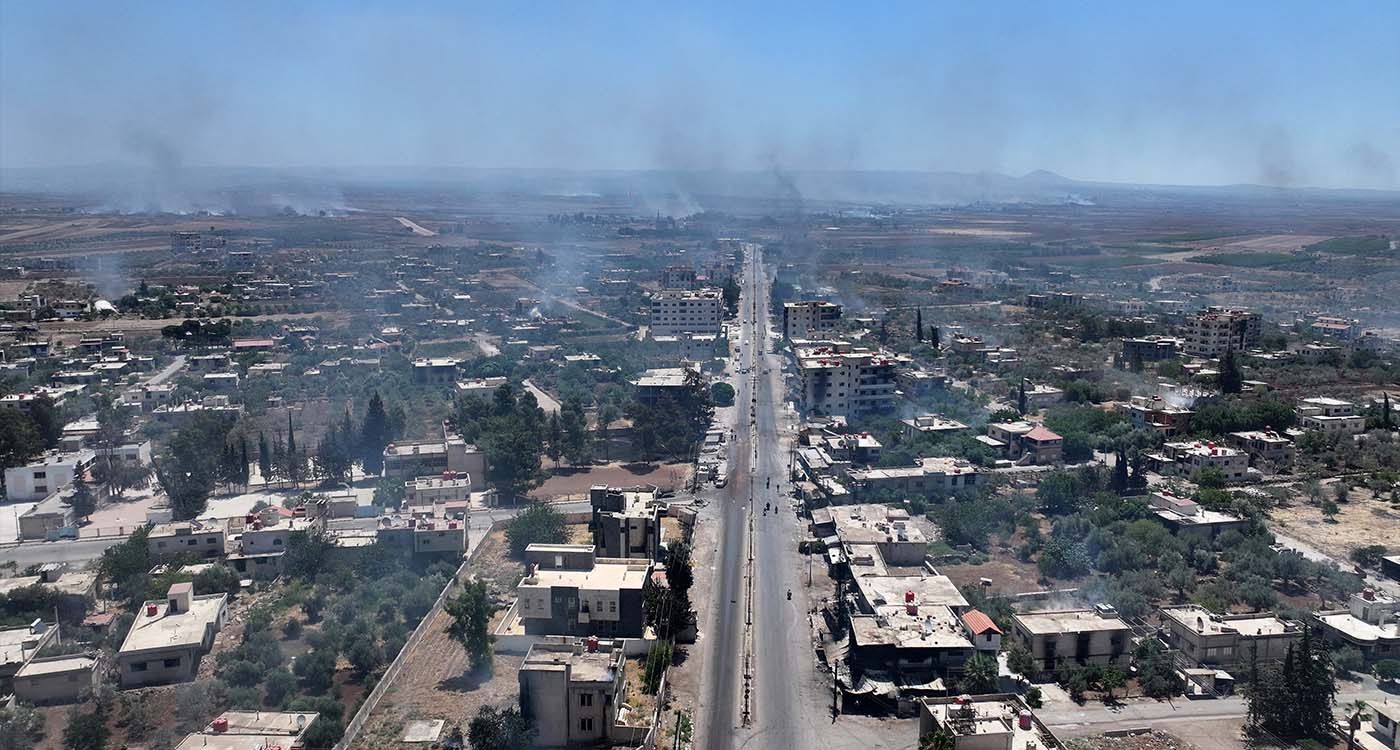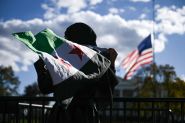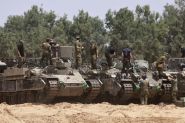- Home
- Middle East
- Israel in Sweida: Motives and Ambitions

©OMAR HAJ KADOUR / AFP
As heavy clashes enter their second week in Syria’s southern province of Sweida, pitting Druze factions against tribal groups backed by the Syrian Army and security forces, Israel’s quiet but deliberate involvement is raising alarm. Official claims of protecting Syria’s Druze are met with widespread skepticism. The real story lies in Tel Aviv’s effort to inflame sectarian divisions and undermine President Ahmad al-Sharaa’s regime to advance broader regional ambitions. So, what does Israel really want?
The timing is no coincidence. The fighting erupted just days after Israeli Prime Minister Benjamin Netanyahu met with US President Donald Trump. According to sources, the two clashed over Washington’s push for a ceasefire in Gaza, brokered by Egypt, Saudi Arabia, and Qatar. The proposed plan would remove Hamas from power and install an Arab-led administration under Egyptian oversight.
The plan posed serious risks for Netanyahu, both at home and abroad. Domestically, it could spark political fallout and intensify legal pressure, potentially landing him in court. Internationally, it opens the door to renewed calls for accountability over alleged war crimes. Against this backdrop, Netanyahu has seized the Syrian front as an “honorable” escape following the collapse of negotiations in Azerbaijan between Syrian and Israeli officials. Syria refused to sign any agreement before Israel withdrew from territories it occupied after the fall of the Assad regime, while Tel Aviv demanded that President Ahmad al-Sharaa expedite the signing to facilitate its withdrawal.
In response, Israel has escalated pressure on Sharaa to accelerate the agreement and establish demilitarized zones along its borders with Syria and Lebanon.
The clashes have taken on a sectarian character, intertwined with geopolitical, economic, and commercial stakes, reflecting a broader Israeli-regional conflict. The confrontations between tribal groups and the Druze, whose loyalties are divided between Syria and Israel, reveal a longstanding vendetta resurfacing under new leadership. It has become clear that extremists embedded within key institutions, particularly the military, continue to wield influence and subject civilians to brutal abuse.
Diplomatic sources emphasize that protecting Syria’s Druze community does not justify bombing a government building in Damascus near the presidential palace. Yet, recent events sent a clear message to Sharaa. Some members of the military force deployed to Sweida to suppress the violence committed massacres, an admission Sharaa himself made, pledging to hold those responsible accountable. Consequently, the force was withdrawn after Israel threatened to enter, while Turkey warned it would respond with airstrikes should Israel penetrate.
The events in Sweida raise critical questions and convey significant messages. Has Netanyahu succeeded in enforcing division and orchestrating a population transfer by relocating tribes via Dawood Route (David’s Route) to secure a safe corridor to Erbil? Is Israel attempting to reclaim its role as protector of minorities in the region, a role it notably failed to uphold in Lebanon in 1982? Has it pressured Sharaa to expedite signing a political agreement? Does Israel still insist on establishing demilitarized zones along its borders with Lebanon and Syria?
Diplomatic sources suggest that Netanyahu’s recent escalation in Syria aims to shield him from domestic and international prosecution should a ceasefire be achieved in Gaza. It also seeks to enforce the principle of “no weapons outside official authority” while pressuring Sharaa to purge extremists and restore stability in Syria. These developments reflect the hidden struggles between Turkey and Israel, and between Israel and Iran.
Tel Aviv remains firmly opposed to Iran’s return to Syria, despite Hezbollah and Iranian officials betting on Sharaa’s downfall and Syria’s re-alignment with the Iran-led obstructionist axis. Simultaneously, Israel seeks to diminish Turkish influence in Syria and prevent the country’s drift toward Sunni extremism.
The trauma of October 7, the Hamas attack on Israel, continues to haunt and frighten Israelis, fueling their relentless efforts to prevent a recurrence.
Beyond these factors, the commercial dimension takes center stage, driven by competition between China’s Belt and Road Initiative, India’s economic corridor, and the Dawood Route. Following recent incidents in Syria, Israel leaked intelligence portraying Syria as a pivotal regional player and Lebanon as a strategic hub linking East and West. Consequently, Israel aims to assume the combined roles of both Lebanon and Syria.
Sweida occupies a critical geographic position within a major geopolitical and strategic project known as the Dawood Routes. This corridor stretches from the Golan Heights through Daraa and Sweida to al-Tanf, then passes through Kurdish-controlled areas (QSD) before reaching Erbil. The recent events in Sweida reflect an Israeli attempt to secure control over this vital route. The persistent presence of tribal groups in the area continues to fuel instability and conflict.
What unfolded in Sweida is part of a broader geopolitical strategy reshaping trade routes, energy flows, and spheres of influence worldwide.
A Lebanese official notes, “From here, we can understand the underlying causes of the Beirut port explosion and Lebanon’s descent into cycles of violence, crises, and institutional, economic, and financial collapse.” The pressing question remains: Is Lebanon’s current leadership working to restore its pivotal role as the bridge between East and West?
Read more



Comments